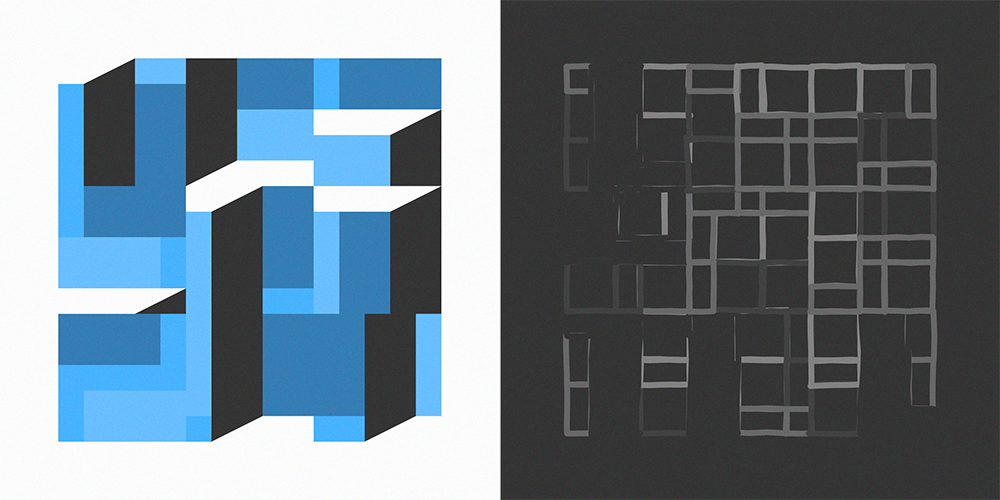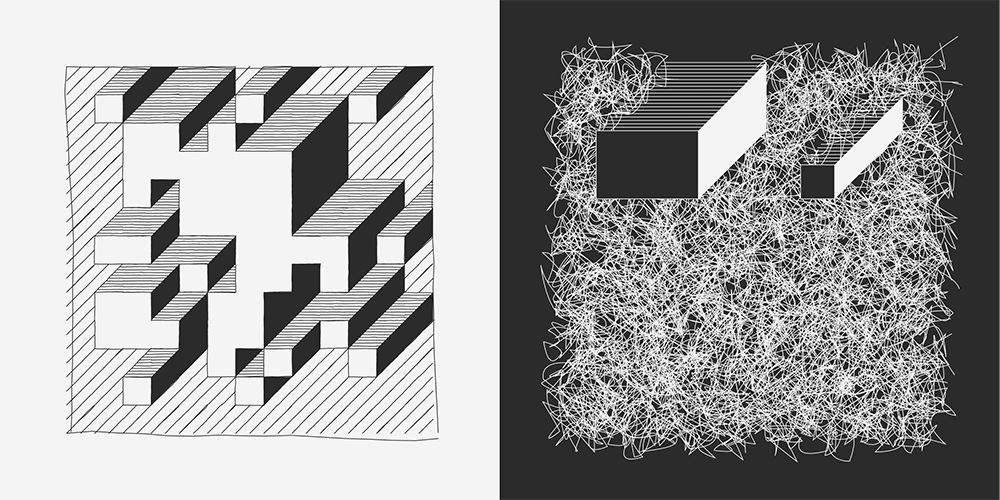Zajec Studies
It started with a tweet in late December last year. I had just returned home to New York from a trip visiting my parents in my home town. And had spent hours explaining to them my passion around generative art on the blockchain: how poetic it was that a minting hash decided the fate of pixels on the screen. How the collector saw the work before even the artists could.
And my dad, a mechanical engineer, asked if he could create art in FORTRAN. We have a running joke that if you can build it in a modern language (JavaScript, Python, Swift, etc), then he would try to reproduce it in FORTRAN, his coding language of choice.
Which led to a Google search: "has anyone made generative art in FORTRAN" — I clicked on a link that seemed promising: History of Computer Art -- Part 2: Plotters and halfways down the page, I saw it: Edward Zajec's RAM 13 and The Cube.
I reported back to my father that, yes... in fact the origins of generative art are steeped in the language that he so loves. But that I was going to try my hand at them in a new and modern stack: NFTs.

For the next month, I spent my free time learning from the early generative pioneers, especially Zajec. Though I had a background in Computer Science, I had never used p5js or creative coding tools. Out of this study came three collections (in total 333 pieces) minted on the Tezos blockchain through fxhash. Tendencies, Tema, and Adjacent.
Tendencies
Tendencies marks my first generative work on the blockchain, and homage to Zajec's earliest plotter work, RAM 10 V.15.
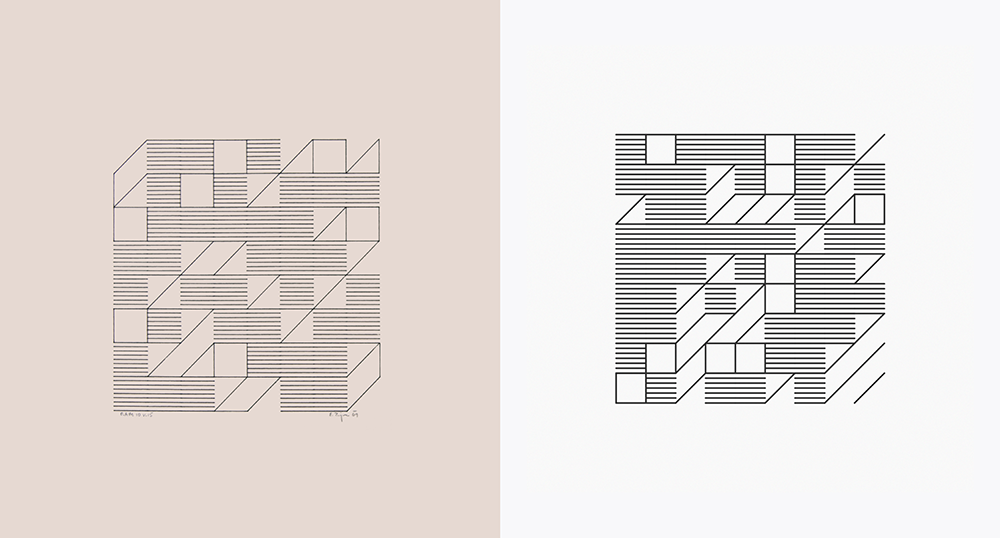
The collection's name was chosen right before mint: for the entire development of the algorithm, it had simply been called "RAM". The name was inspired by the 1960s-era modernist art movement called New Tendencies: "Rather than opposing the forces of technology as most artists and intellectuals of the time did, [New Tendencies artists] imagined the rapid advance of technology to be a springboard into a future beyond alienation and oppression. Works by New Tendencies cast the viewer as coproducer, abolishing the idea of artist as creative genius and replacing it with the notion of the visual researcher. In 1968 and 1969, the group actively turned to the computer as a medium of visual research, anticipating new media and digital art."
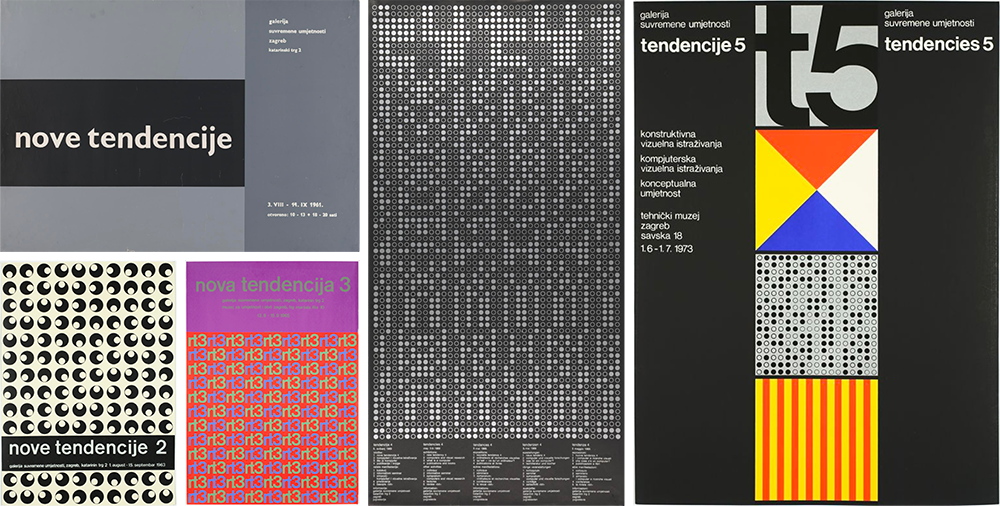
Between 1961 and 1973, five international exhibitions were organized under the New Tendencies title (Nove Tendencije). Zajec first showed his generatively-derived plotter art at Tendencije 4 in 1969.
Tendencies minted on December 31, 2022 for 2 tz each. The algorithm was 339 lines of code.
Tema
Work on the second collection began before the mint for "Tendencies". I began studying what Zajec had named "TVC", or: "Themes and Variations the Cube".
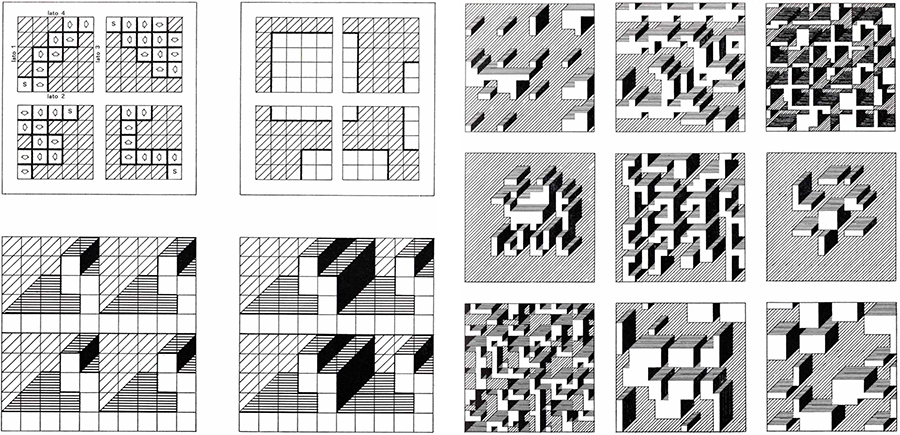
Unlike the first study, I had Zajec's own algorithm to guide me. In 1971, the Museo Revoltella organized "COMP 3", a solo exhibition of the TVC project at Palazzo Costanzi in Trieste, where Zajec was teaching. Exhibition-goers were given a catalogue that explained in detail the rules and parameters of TVC. It also contained two pages of basic elements, which could be detached and used to experiment with their own arrangements.
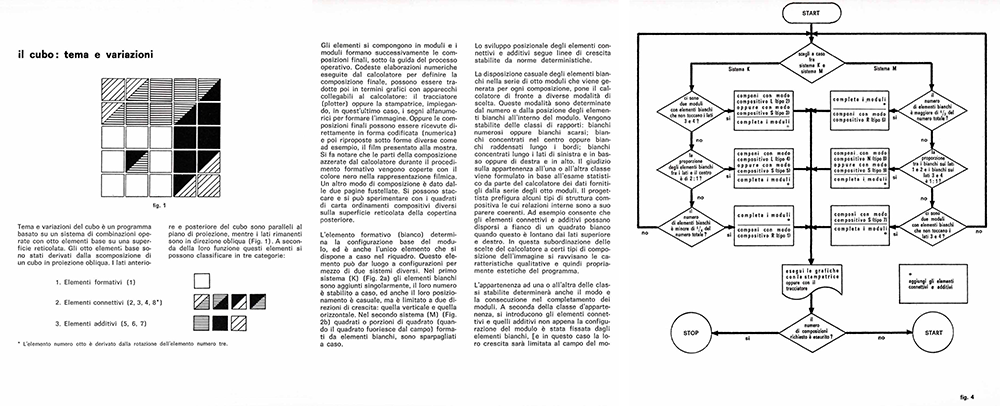
Entertainingly, these instructions were in Italian, which required a full paper translation prior to implementation. The name "Tema" honors TVC's title, in its original language: "Il Cubo: Tema e Variazioni".
Tema was minted on January 8th for 5tz.
Adjacent
One key learning from recreating TVC's algorithm was that Zajec worked closely with a programming partner, Matja Hmeljak. This would shape my approach for the third study, "Diagonal White". On many of the plotter outputs for both RAM and TVC, you can find evidence of his work:
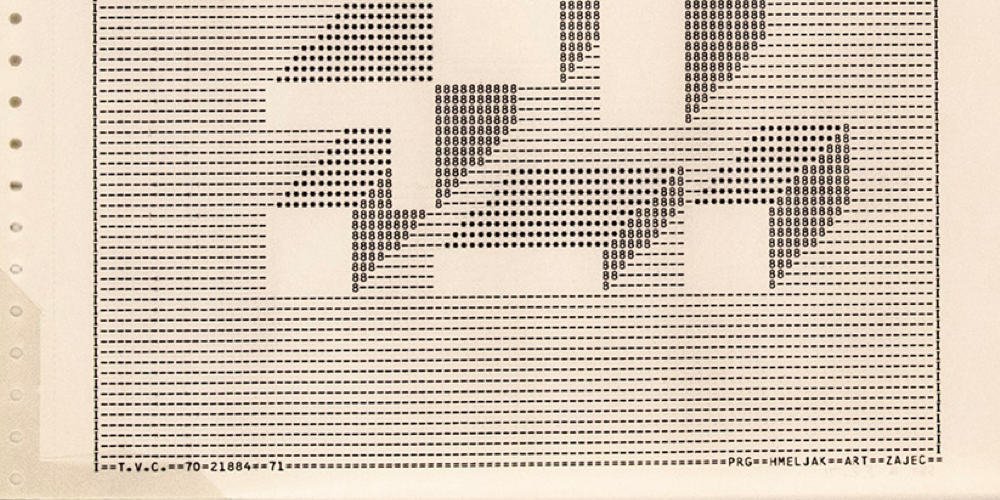
Many of the collections I admired were also created by collaborators: (kinder)Garden, Monuments by Yazid and zancan, Acequia by Rich Poole and Rick Crane, Primera by Andrew Mitchell and Grant Yun. I took a page out of Zajec's book and asked Chris Maddern if he would work on a collection with me for my third study.
We decided to tackle "Diagonal White", a program that Zajec had developed in collaboration with Hmeljak. Similar to his work on TVC, he had documented the algorithm, which we proceeded to tackle together. In 1976, Ruth Leavitt published a collection of papers titled "Artist & Computer", which highlighted the 35 prominent generative artists and asked them to discuss their work. They were posed questions like, "Do you feel art work created with a computer has now or will have an impact on art as a whole in the future?". Edward Zajec was a subject of one of those papers and in it detailed the approach to Diagonal White:

Adjacent minted January 20, 2023 — the day between my and Chris' birthdays and 20 days after the first mind of Tendencies. For the first time, the name was not inspired by Zajec's work, but instead found itself in the code of the program. A function in the program, `isAdjacent`, was critical to determining whether two shapes were next to each other, and determining shading and shaping based on the items around it.
